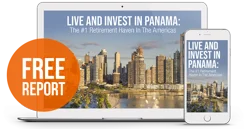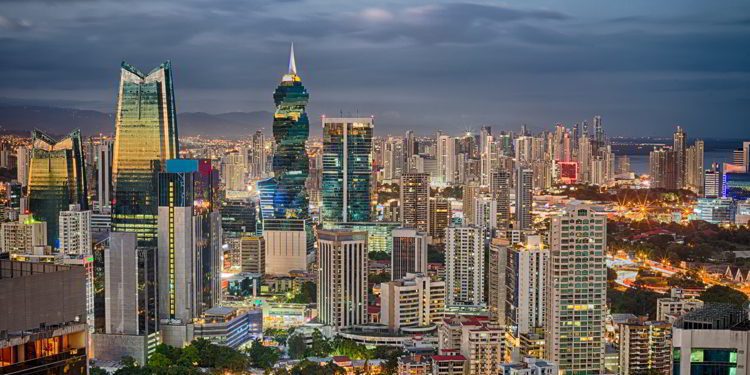“Panama City will be the next Singapore…”
I couldn’t tell you how many times I’ve heard that prediction—from Panama property developers, real estate agents, investment advisors, and market pundits—over the years I’ve been doing business in this country.
I was in Singapore not long ago, and I can tell you that Panama City doesn’t stack up. The infrastructure and levels of quality, service, and overall experience don’t compare.
But you’ve got to put any comparison between these two places into perspective. Singapore has had a 35-year head start on Panama City.
Gaining independence in 1965, it took Singapore decades to overcome the unemployment and economic woes it faced as a new nation.
Panama gained independence from Colombia more than 100 years ago… but then the United States stepped in to build and manage the canal and exerted huge influence throughout the country during that time.
So I’d say you could count the year that the canal was turned over to the Panama government (that is, 1999) as this country’s real start date.
After the American military took their leave, Panama experienced a minor recession. When all those GIs left, they took their disposable income—which they had been spreading around liberally in the bars, restaurants, and shops of Panama City—with them. Many restaurants closed or sat empty most nights for years following the Americans’ departure.
My first trip to Panama was in 2000. At the time I toured and could have bought a big house in one of the best neighborhoods of Panama City for US$200,000 or less. Today houses of character of the kind I’m thinking come with price tags of, say, US$2 million.
When the U.S. military pulled out, they left behind their military bases… and their housing. Back in 2000, army houses on the bases at Albrook and Clayton were selling for as little as US$20,000. Today, these houses trade in the neighborhood of US$500,000.
Still, prices in Panama City today don’t come close to those in Singapore.
Will they ever?
The infrastructure today in Panama City, again, does not compare with that in Singapore, despite all the advancements and improvements that, yes, Panama has made on this front over the past two decades.
And, historically, buildings in this city haven’t approached the same quality and amenity levels of the average structure in Singapore.
But this is changing… and I predict that Panama City is right now turning an historic corner.
What’s Panama’s Next Stage?
I met with a development group this week that is committed to building for this city’s next stage of growth… building with a view toward what Panama City will be 20 years from now.
In our meeting, this developer made the reference before I did…
“We’re creating Singapore-level quality, services, and amenities,” he told me…
“And, as a result,” he continued, “we’re able to sell our apartments at a premium compared with any other buildings in Panama City.”
Which is still a fraction of per-square-meter costs in Singapore.
This group is setting a new standard… and other Panama developers are following suit.
Of course, that’s only half the picture. Singapore-standard buildings with Singapore-standard apartments and amenities won’t qualify as Singapore-standard overall if the infrastructure of the city where the buildings stand is sub-Singapore.
Panama is on this, too.
Get Your Free Panama Report Today!
Simply enter your email address below and we'll send you our FREE REPORT - Live And Invest In Panama: The #1 Retirement Haven In The Americas.
The Developments In Panama
Most recent big-deal infrastructure improvements include the expansion of Tocumen International Airport, the new convention center, the new line of the city metro, and two new cruise ports on the Amador Causeway.
In the works are another bridge over the canal coupled with a new highway connecting to that bridge, intended to help mitigate the right now nightmare experience that is the daily commute in this city. And, across the city, sidewalks are being installed and electric cables are being buried underground.
Not only infrastructure, but amenities and services, too, are evolving in real time. New condo buildings feature restaurants, valet parking, and concierge services, along with gyms, pools, saunas, and shops and offices so owners and tenants have easy access to things like dry cleaners and convenience markets.
Each new generation of buildings in Panama City pushes the city to a higher level, both figuratively and literally. The low- and mid-rise buildings of the 70s, 80s, and even 90s are being overtaken by 21st-century high-rises of 50 stories and more.
The other things Panama City needs more of if it’s going to compete with Singapore are parks and green spaces. Again, though, Panama recognizes this. We’ve watched as parks across the capital city have been renovated in the last few years, and the now 12-year-old Cinta Costera has evolved into an impressively landscaped and maintained open-air activity green zone.
Twenty years ago when we began paying attention to this country, we compared Panama City with other Central American capital cities… and made the point that there was no comparison. No other city in the region had anything like the levels of infrastructure available and under construction at the time in the Panamanian capital.
Today, this point goes without saying.
The more relevant correlation today is between Panama City and Southeast Asia’s Lion City.
Because I do believe it’s a matter of time until the two are considered peers.
Meaning right now is the time to be buying property in Panama City.
Sincerely,

Kathleen Peddicord
Founding Publisher, Overseas Opportunity Letter










